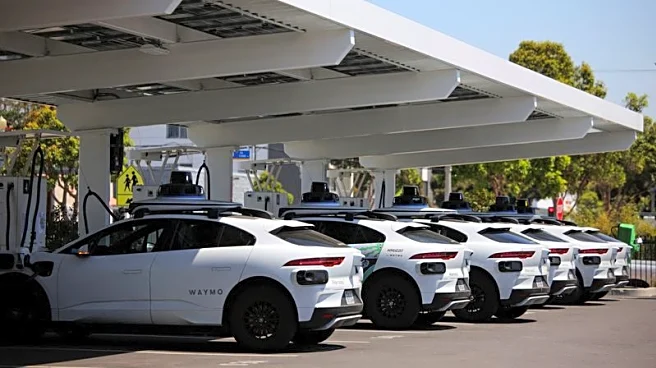What's Happening?
The Southwest Power Pool (SPP) board of directors has approved a new policy aimed at expediting the integration and interconnection of high impact large loads (HILLs), such as data centers and manufacturing facilities. This policy introduces a 90-day study-and-approval process to facilitate the interconnection of large loads, enabling early detection of system constraints and improving coordination across entities. The peak load in SPP is projected to increase from 56 GW to 105 GW over the next decade, necessitating efficient interconnection processes. The policy, known as Revision Request 696, requires approval from the Federal Energy Regulatory Commission (FERC) and is designed to maintain grid reliability while balancing cost-effectiveness with expedited market deployment timelines.
Why It's Important?
The approval of this policy is significant as it addresses the growing demand for electricity in the U.S., driven by the expansion of data centers and manufacturing facilities. By streamlining the interconnection process, SPP aims to support faster market entry and enhance price signals, providing developers with more confidence in expected costs and timelines. This move is crucial for maintaining grid reliability and operational efficiency amid increasing electricity demand. The policy also highlights the importance of transparency and market efficiency, which are key benefits for developers seeking to invest in large load projects.
What's Next?
The next steps involve obtaining approval from FERC for the policy and associated tariff revisions. Other grid operators, such as PJM Interconnection and the Electric Reliability Council of Texas, are also working on similar initiatives to facilitate the interconnection of large loads. These efforts may lead to new rules requiring large loads to participate in demand response programs, further enhancing grid stability. As the policy is implemented, developers may explore opportunities to build smaller data center operations that can bypass extensive system upgrade costs and lengthy interconnection processes.
Beyond the Headlines
The policy could have broader implications for the energy sector, potentially influencing the design and operation of future data centers and manufacturing facilities. It may also encourage innovation in grid management and interconnection strategies, fostering a more resilient and adaptable energy infrastructure. Additionally, the focus on large loads paired with new or existing generation could drive advancements in renewable energy integration, supporting the transition to a more sustainable energy system.













